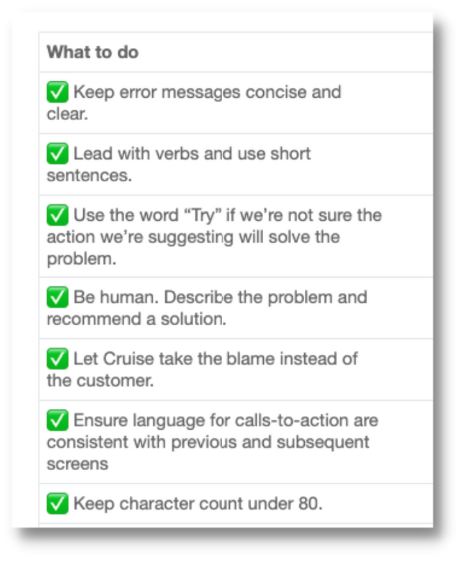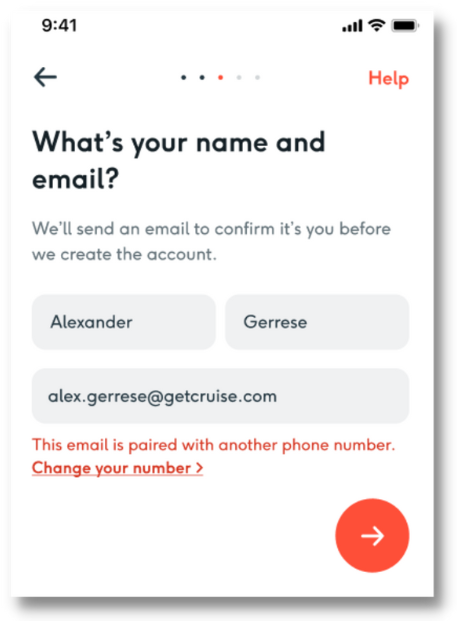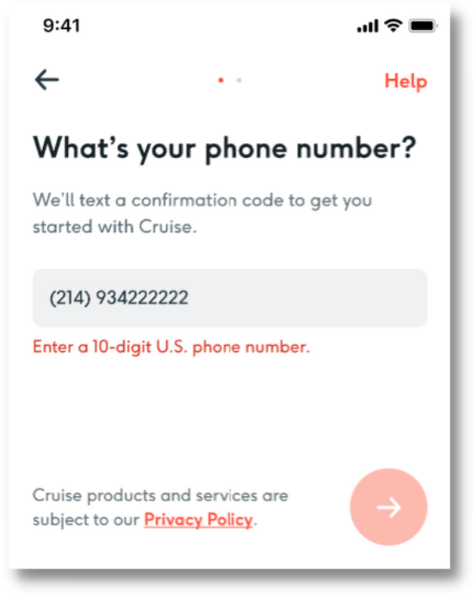Cruise’s initial content team
Content guidelines | Cruise
Background
Wordland Design was hired by the Director of Content at Cruise Automation, a GE-owned autonomous ride-sharing app, to develop the company's voice and tone and write their content guidelines from the ground up. We were the sole content team working with our client as she focused on hiring and building her initial internal team.
My role
I was the lead Content Designer. I applied Cruise's voice and tone to Figma screens for several in-product UX flows. Content gaps I acknowledged led to the iteration of voice and tone guidelines.
I created the style and grammar sections of Cruise's content guidelines, and I championed for and delivered accessibility guidelines with a focus on neurodivergent, anti-racist, and gender-neutral language.
I led the development of in-product error messages, and I wrote the content guidelines for error messages and notifications.
Develop voice, tone, and guidelines from scratch
We were limited to building content guidelines for a roughly 2,000 person company within GoogleDocs. While easy to edit, this presented its own set of challenges when it came to organizing and designing the document in a way that did not feel overwhelming.
I wrote the majority of the guidelines, including the style, grammar, and accessibility sections. I researched best practices for each and developed guidelines for Cruise that matched the company's voice and tone. To add clarity, I included examples for each section and exceptions to rules for different communication channels (in-product, email marketing, social).
Design for everyone
A major pillar of Cruise's brand was inclusion. They knew they wanted to develop guidelines around anti-racist and gender-neutral language. As I researched sensitivities with creating inclusive corporate language, I discovered a gap around the neurodivergent population, an audience underserved until now. I championed Cruise to expand our initial content guidelines deliverable, I created robust guidelines for inclusive language, and I edited our style and grammar guidelines language to match.
Unique challenges for writing errors and notifications
When I joined the project, Cruise had basic, placeholder text for error messages. Notifications had not yet been addressed. Matching error messages to a company's voice can be a finicky process. A clear, simple, and straightforward tone worked best for Cruise. Considering the use cases for error messages, it was not the time for "cute" personality. It took careful thought and many iterations to nail down Cruises's desired tone. Guidelines followed.
Cruise cars have an in-car auditory feature. This made writing error messages and notifications especially tricky. In addition to the normally challenges for deciphering how the language of these messages would read for a broad audience, we also needed to consider how they would sound if a machine read them aloud.
Error messages and notifications were written for: toast messages, in-line messages, banners, modals/half-screens, full-screen messages, and locked screen notifications.



Outcome
Wordland had an excellent working relationship with Cruise. We were true partners with our client, and she and her team were grateful for the amount of work accomplished and my attention to detail.






